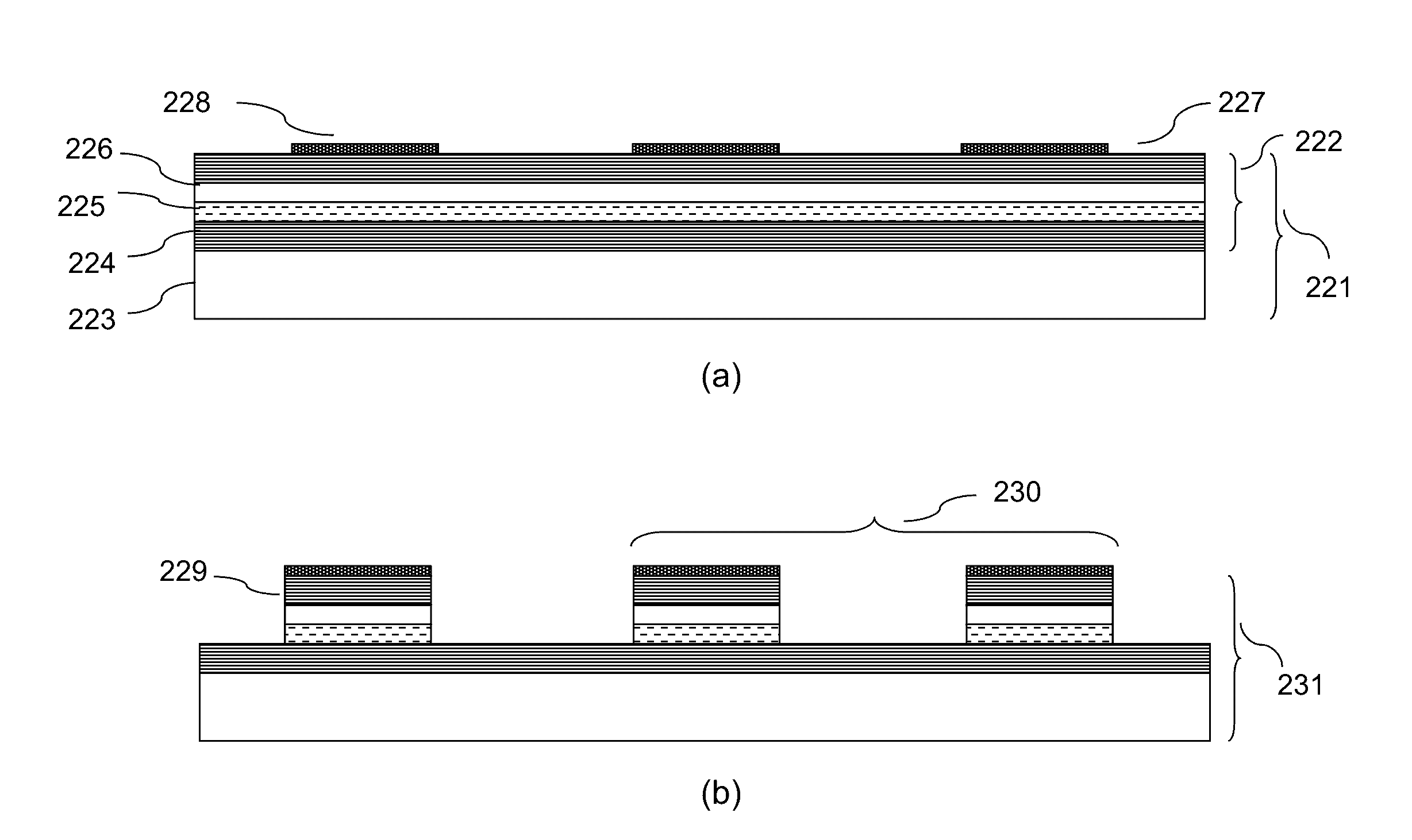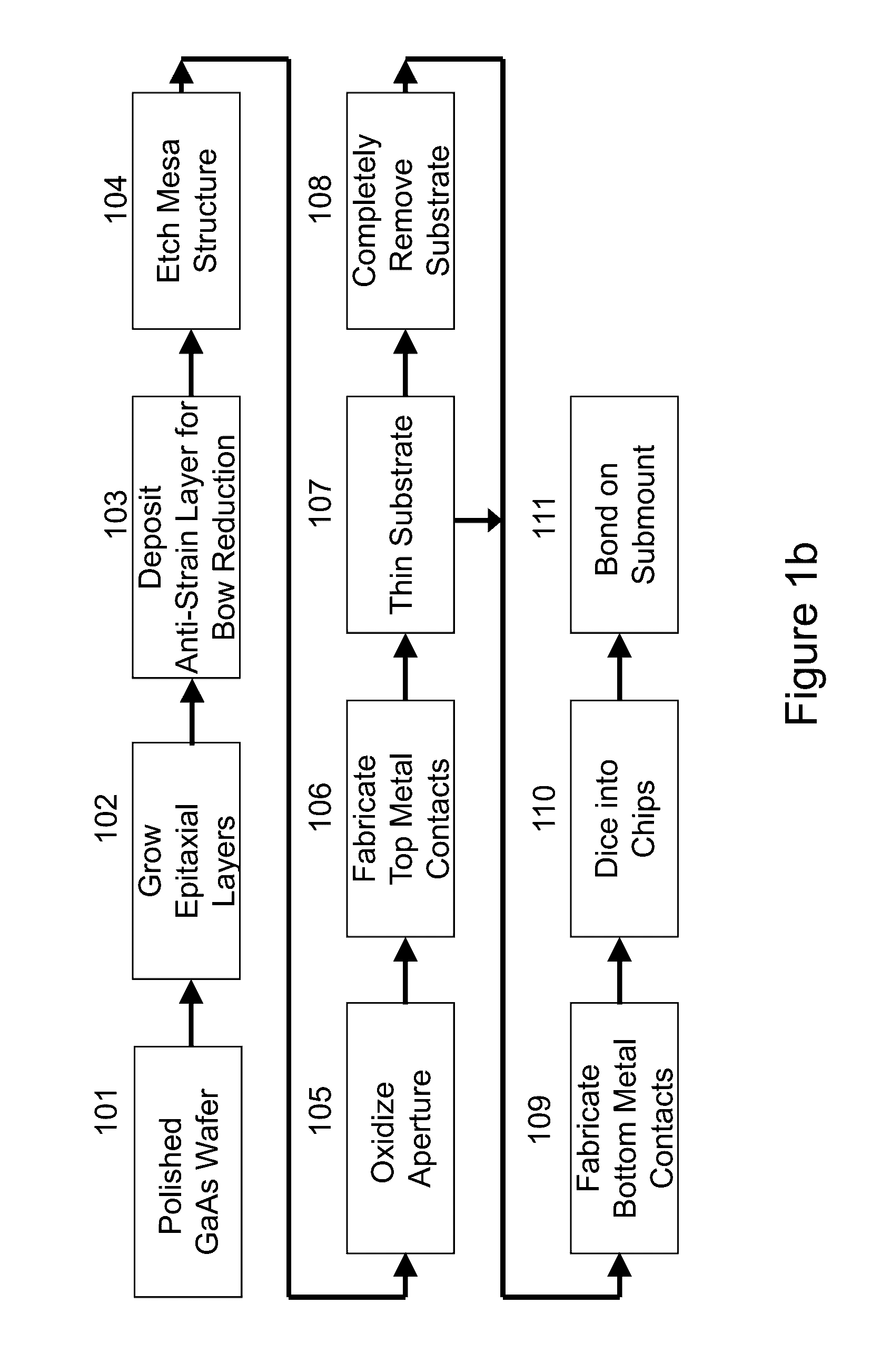Processes for making reliable VCSEL devices and VCSEL arrays
a technology of vcsel devices and arrays, applied in the direction of lasers, semiconductor laser structural details, semiconductor lasers, etc., can solve the problems of affecting stable operation and reliability, inducing strain in epitaxial layers and also between, and designing a process applicable in the manufacturing environment for high volume and large area wafers is particularly challenging, so as to reduce overall stress, reduce the total volume of the oxide zone, and reduce the overall volume
- Summary
- Abstract
- Description
- Claims
- Application Information
AI Technical Summary
Benefits of technology
Problems solved by technology
Method used
Image
Examples
Embodiment Construction
Basic Process to Construct VCSEL Device
[0042]A broad framework of the principles will be presented by describing various aspects of this invention using exemplary embodiments and represented in different drawing figures. While the drawing figures show a structure, the structure is used to illustrate / describe a process that is used to create the structure. The process in this context is used synonymous to a method or a step in a sequence of processes that need to be carried out in a particular order to achieve a certain beneficial result for a given structure of a VCSEL device. For clarity and ease of description, each embodiment includes only a few aspects. Different aspects from different embodiments may be combined or practiced separately, to design a customized process depending upon application requirements. Many different combinations and sub-combinations of few representative processes shown within the broad framework of this invention, that may be apparent to those skilled in...
PUM
 Login to View More
Login to View More Abstract
Description
Claims
Application Information
 Login to View More
Login to View More - R&D
- Intellectual Property
- Life Sciences
- Materials
- Tech Scout
- Unparalleled Data Quality
- Higher Quality Content
- 60% Fewer Hallucinations
Browse by: Latest US Patents, China's latest patents, Technical Efficacy Thesaurus, Application Domain, Technology Topic, Popular Technical Reports.
© 2025 PatSnap. All rights reserved.Legal|Privacy policy|Modern Slavery Act Transparency Statement|Sitemap|About US| Contact US: help@patsnap.com



